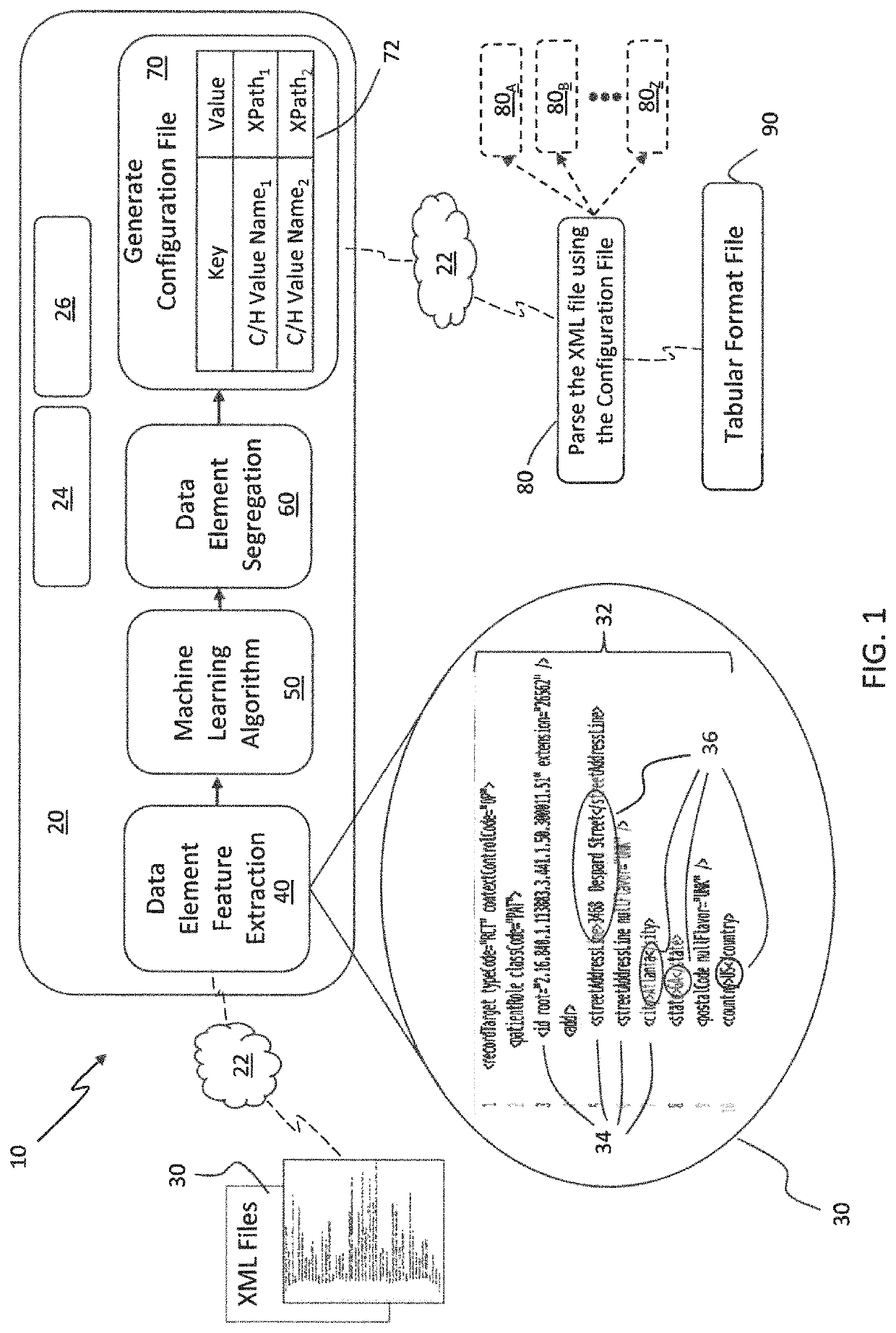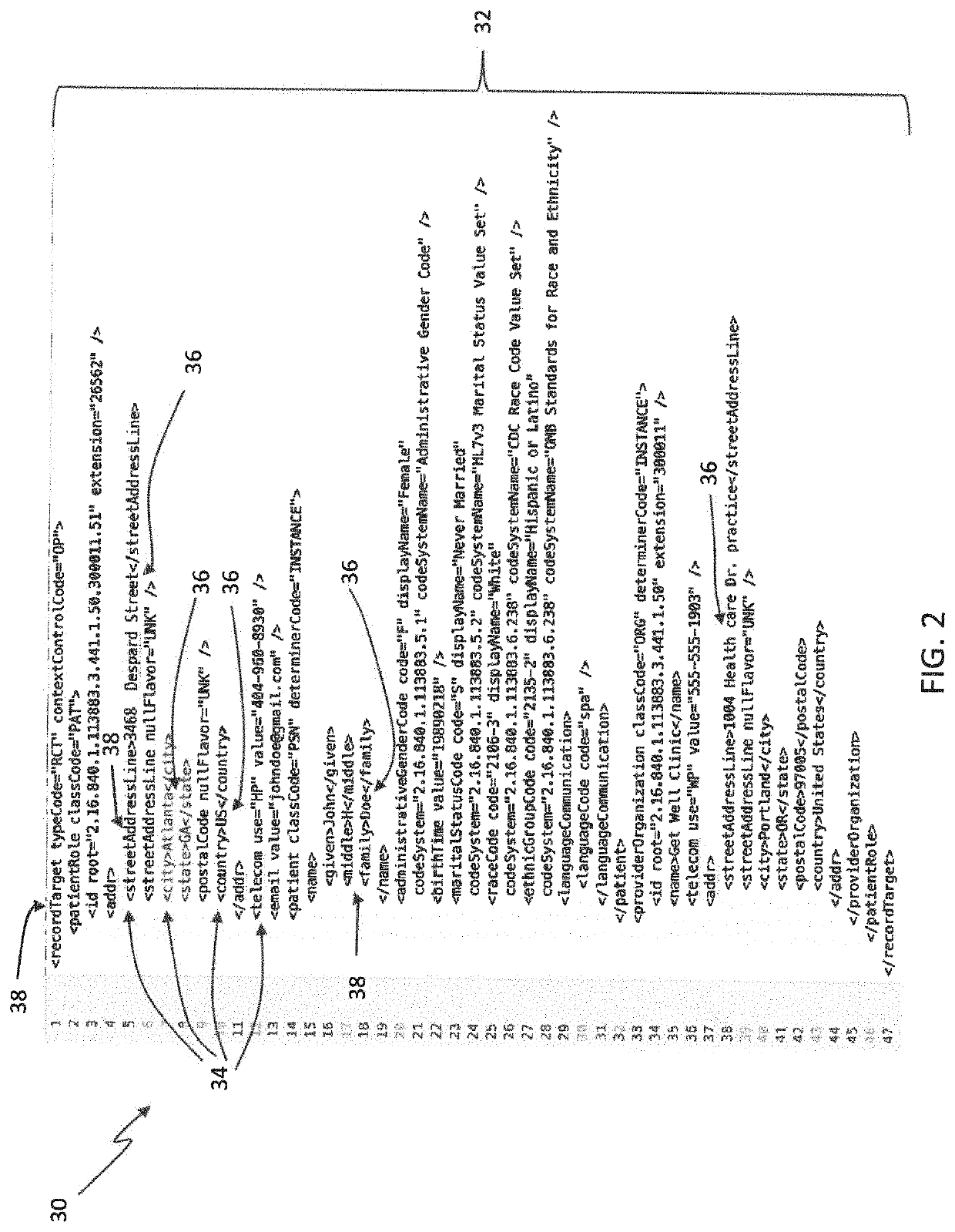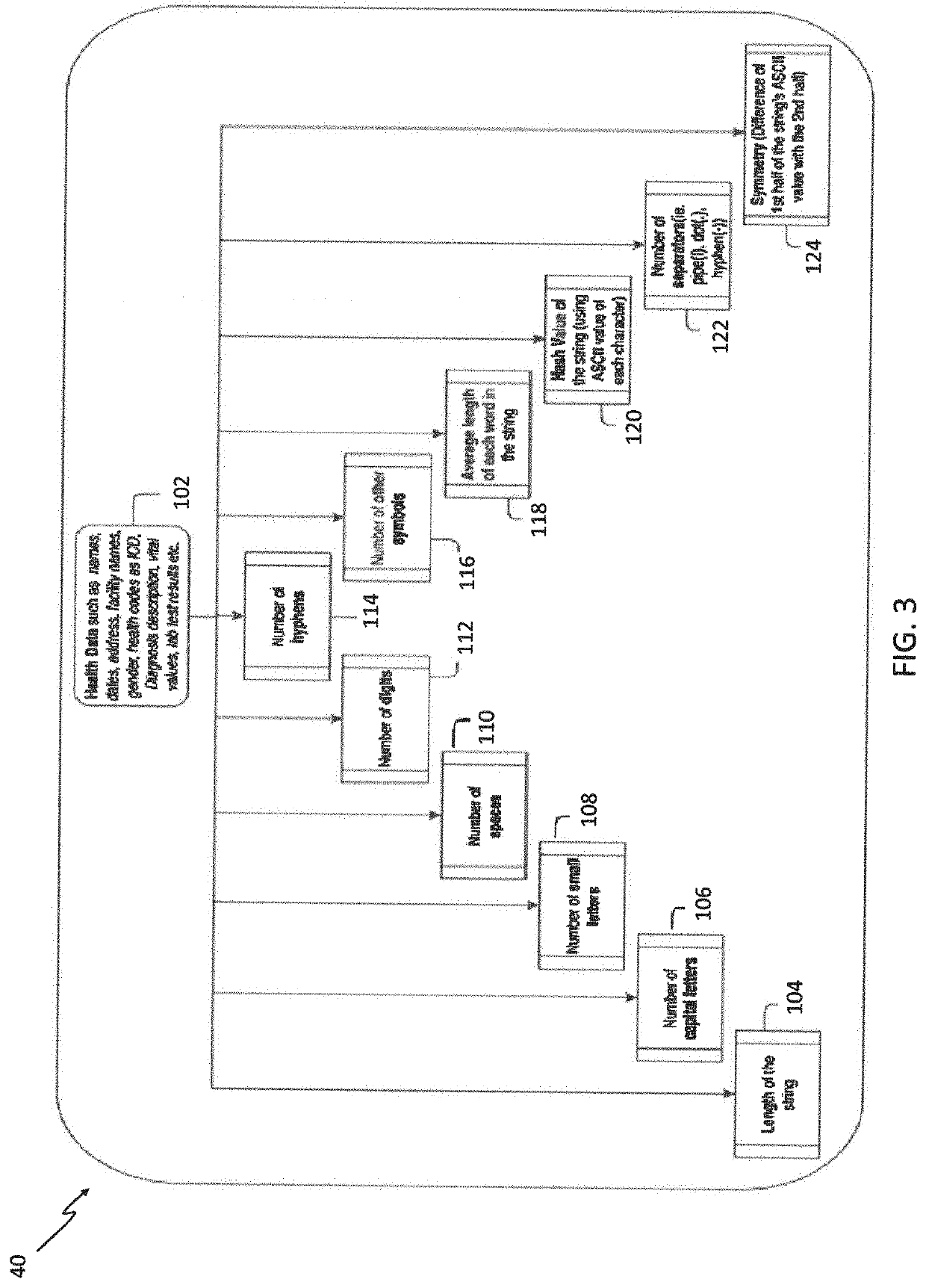Automated systems and methods for textual extraction of relevant data elements from an electronic clinical document
a textual extraction and electronic clinical technology, applied in the field of electronic data processing, can solve problems such as problems in the implementation of such a system, ingestion of this data by the it industry, and problems in the step plagued by problems
- Summary
- Abstract
- Description
- Claims
- Application Information
AI Technical Summary
Benefits of technology
Problems solved by technology
Method used
Image
Examples
Embodiment Construction
[0024]To address the shortcomings described in the Background, novel methods and systems have been developed to ensure the integrity, efficiency and accuracy of healthcare analytics. In particular, these novel methods and systems may provide substantial benefits with the extraction of health data from the clinical document, which is widely used by the health information exchanges to transmit PHI related to the clinical facet of the patient's journey, and conversion of that health data into an IT-usable tabular format. As previously discussed, the effectiveness of the health analytics industry is plagued by the problem of efficiently and accurately ingesting health data from unstructured or semi-structured formats to a structured, tabular format. Health data, and specifically the clinical data, needs to be parsed to extract the relevant data such that it can be ingested by the IT organization in the form of tabular data. However, parsing of the unstructured or semi-structured data fo...
PUM
 Login to View More
Login to View More Abstract
Description
Claims
Application Information
 Login to View More
Login to View More - R&D
- Intellectual Property
- Life Sciences
- Materials
- Tech Scout
- Unparalleled Data Quality
- Higher Quality Content
- 60% Fewer Hallucinations
Browse by: Latest US Patents, China's latest patents, Technical Efficacy Thesaurus, Application Domain, Technology Topic, Popular Technical Reports.
© 2025 PatSnap. All rights reserved.Legal|Privacy policy|Modern Slavery Act Transparency Statement|Sitemap|About US| Contact US: help@patsnap.com



